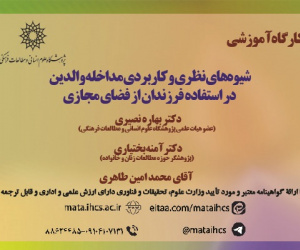نسبت معنویت و عرفان اسلامی (مقاله پژوهشی حوزه)
درجه علمی: علمی-پژوهشی (حوزوی)
آرشیو
چکیده
با توجه به وجود جریان معنویت در جهان معاصر، در محیط اسلامی پرسشی به وجود آمده که نسبت معنویت با عرفان چیست؟ آیا بین آنها نسبت همسانی برقرار است یا ناهمسانی یا عموم و خصوص؟ در پاسخ، «معنویت مطلق» تعریف شد و آن خودپیدایی عقلی تجربی از حیث خروج از تعارض ها و رهایی از رنج ها به سوی یافتن آرامش است. به تعبیر دیگر، «معنویت» یعنی: یافتن خود آرام. سپس «عرفان اسلامی» تعریف شد و آن حرکت توحیدمحورانه دل دردمند و غریب در مسیر گذر از لایه لایه های دل و عبور از منازل دل تا سرحد یافت شهودی شورانگیز و دهشت انگیز خدای سبحان، آن هم در سرّ سویدای دل است. به تعبیر دیگر، عرفان حرکت دردمندانه و باورمندانه از خودیابی به خدایابی است. پس از این دو تعریف، بین معنویت مطلق و عرفان اسلامی نسبت سنجی صورت گرفت که به علت عمومیت معنویت مطلق از جهت دامنه دینی و فرهنگی و مکتبی و از جهت اطلاق در مؤلفه های تعریفی، حکم به عموم و خصوص مطلق داده شد. آنگاه معنویت در فرهنگ اسلامی به سه قسم (معنویت اجتهادی دینی، معنویت عقلی فلسفی و معنویت تجربی عرفانی) تقسیم شد و از این رهگذر بین معنویت اسلامی با معنویت عرفانی مقایسه گردید که به علت عمومیت معنویت اسلامی، حکم به عموم و خصوص مطلق داده شد. آنگاه بحثی چالش برانگیز آغاز شد و آن نسبت معنویت عرفانی و عرفان اسلامی است. به این هدف، مؤلفه های معنویت عرفانی که شامل خود واقعی، ظرفیت های خود واقعی، یافتن خود واقعی، تعارض های موجود در خود واقعی و در نهایت، آرامش تشریح شد و از این رهگذر با عرفان اسلامی مقایسه گردید و چون معنویت عرفانی قوس آغازین تا میانه عرفان اسلامی است، حکم به عمومیت عرفان اسلامی و خصوصیت معنویت عرفانی داده شد. البته روش تحقیق در این نوشتار روش تحلیلی بر پایه داده های فلسفی و عرفانی به سرانجام رسیده است.The Relationship between Spirituality and Islamic Mysticism
Given the spiritual movement in the contemporary world, questions has arisen in the Islamic environment with regard to the relationship between spirituality and mysticism. Is there the relationship between them of the similarity, dissimilarity, generality and particularity nature? In response, “absolute spirituality” was defined as the rational-empirical self-discovery, getting rid of conflicts and suffering and finding peace. In other words, “spirituality” means finding the peaceful self. Then “Islamic mysticism” was defined as the monotheistic movement of the painful and lonely heart passing through the layers and abodes of the heart and finding the exciting and terrifying intuition of God Almighty in the secret of the heart. In other words, mysticism is the suffering and believing movement from self-discovery to God-discovery. After these two definitions, a comparison was made between absolute spirituality and Islamic mysticism, and it was concluded that , due to the generality of absolute spirituality in terms of religious, cultural, and scholastic scope and in terms of application in the definitional components, the relationship is of the general-particular type. Next, spirituality in Islamic culture was divided into three types (ijtihad-religious spirituality, rational-philosophical spirituality, and empirical-mystical spirituality), and a comparison was made between Islamic spirituality and mystical spirituality, and it was concluded that the relationship is of the general-particular type due to the generality of Islamic spirituality. Then, a challenging discussion began about the relationship between mystical spirituality and Islamic mysticism. For this purpose, the components of mystical spirituality, including the true self, the capacities of the true self, finding the true self, the conflicts in the true self, and finally, peace were explained, and a comparison was made with Islamic mysticism. Since mystical spirituality is the beginning to middle arc of Islamic mysticism, it was concluded that Islamic mysticism is general whereas mystical spirituality is particular. This analytical research is based on philosophical and mystical data.











